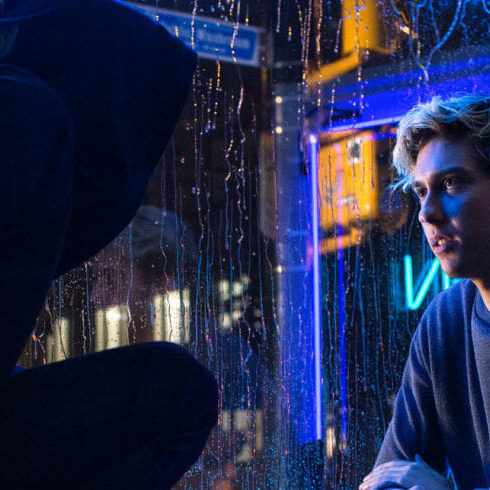
You may have heard about the new Netflix original Death Note, a movie based on the extremely successful Japanese manga and anime. Death Note is a story about a teenage boy who finds himself in the possession of a book which gives him the power to kill anybody so long as he knows their name and what they look like.
The new film is a western adaptation, using the original premise with slight plot variations – and it takes place in Seattle, Washington, instead of in Japan.
Since the release of the cast list, the movie has been receiving a lot of negative attention in the media. People are accusing the film of whitewashing the original story.
These whitewashed stories have been in the news a lot recently. People are frustrated with the movie and TV industries for continuously casting white actors in traditionally non-white roles. A recent sore point was the casting of Tilda Swinton as a Tibetan monk in Marvel’s live-action Doctor Strange. In the comic books, Swinton’s character was always depicted as being Asian, whereas Swinton is white.
Similar accusations have been made regarding the new Death Note movie. In the manga the characters were all Japanese. In the new film, the majority of the cast is made up of white actors.
But it doesn’t actually look like Death Note is the best example of a whitewashed story.
The movie was meant to be an adaptation, not simply a real-life version of the manga.
Because the movie takes place in an entirely different location, it only makes sense that the cast reflect the diversity of the new city. According to Seattle’s 2016 census, the city’s population is almost 70 per cent Caucasian. This could explain the decision to cast white actors as the majority of the characters. That’s not to say that they couldn’t have cast Japanese actors; that’s a bit of a separate problem.
If the movie is to be accused of any racial discrimination, it would be the usual underrepresentation of minority groups in the cast. Though there are non-white actors in the movie, it still only has its token minority characters, such as Keith Stanfield who plays the character L.
This issue, though slightly different, is definitely related to whitewashing.
It’s an issue that’s been gaining a lot more attention in recent years, most obviously in all the controversy about the “whitest Oscars ever.” People are feeling more empowered to speak against the issue of the severe underrepresentation of non-white actors in films as it more well-known that it’s an issue that needs to be fixed.
Action needs to be taken on both the administration side, but also on the actor side – recently Ed Skrein, after being cast as a traditionally Japanese character in the new Hellboy reboot, turned down the role in order to not whitewash the character. This is an example of the kind of action that needs to be taken in order for any change to happen. Should this change occur, it will hopefully succeed in showcasing the talented non-white actors who up until now have been receiving less attention, than their white colleagues.
Maybe, just maybe, the story shouldn’t have been adapted at all, maybe the live-action film should have remained in Japan in order to protect the cultural integrity of the film. But since it hasn’t, it’s important to realize that yes, there are issues with the new Death Note movie; but it’s not whitewashing. It is the all too common issue of the homogeneous white casts that prevail in western cinema.






